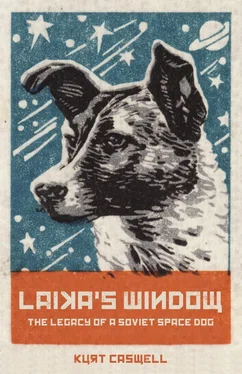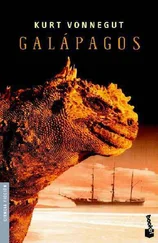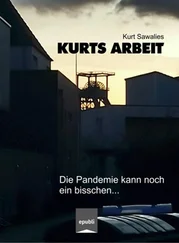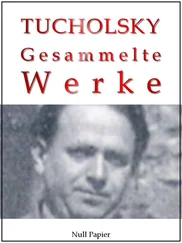Some of the people I spoke with told me that if the goal was to simply get the satellite into orbit it made little sense for the team to take the time (time they didn’t have) to install the hardware necessary to remove the fairing. Even if the team had the time, the required hardware and pyrotechnics would have added extra weight to the vehicle. One reason the final-stage booster was not jettisoned from Sputnik II was to reduce the rocket’s overall weight. Removing the fairing would have added more weight as well as cost and time.
But there is another way of looking at this. “If I were flying that mission, I would have jettisoned the nosecone [fairing],” Gil Moore told me. “Leaving the nosecone on, which covered the satellite, would have interfered with their ability to measure the cosmic ray environment Laika was exposed to in orbit. They would have had better results if the nosecone was removed. And I can’t imagine the extra weight of the hardware to remove the nosecone would have made a difference to that R-7 rocket. It had twenty-five engines. Twenty-five!” He continued: “They had to get the nosecone out of the way when they deployed Sputnik I , so the hardware to do that had already been developed. And I would think that with Sputnik II , they would have wanted to get that nosecone out of the way. But I don’t know definitively. I wasn’t there, and the Soviets worked in secret. Besides,” Moore said, “exposing the window for Laika would have been good preparation for Gagarin, who did have a view of the Earth from orbit.”
Amy Nelson, who has written a number of articles about Laika and the Soviet space dogs, agrees. Without offering evidence, she told me she thinks Laika could see out her window.
Where, I wanted to know, was proof?
I discovered an article about Sputnik II in Pravda , the official newspaper of the Communist Party of the Soviet Union, published ten days after the satellite launched. In that article, I read, “After the last stage of the rocket was established on its orbit, the protective cone was discarded.” That sounded clear enough, but during these years Pravda was as much propaganda as it was historical record. My research into Laika’s story had all along been a slow sifting of misinformation—some of it intentional and some of it misunderstanding—most of which eventually fell away as I continued to read. Still, I could not accept this single source for truth. I needed more.
Then I discovered the work of Anatoly Zak, an authority on Soviet and Russian space history. On his informative website russianspaceweb.com, Zak includes a design drawing of Sputnik II with the “payload fairing release mechanism” clearly labeled, along with a short animation of the fairing coming off to expose the satellite. His site also offers an artist’s rendering of the satellite in orbit with the Earth visible below. You can see the final-stage booster still attached and the satellite on top of the booster with the fairing removed. The detail is fine enough to identify Laika’s capsule. Zak includes the following caption for that image: “Perched on top of a giant rocket, a tiny window could provide a glimpse of the home planet to the first creature ever sent to orbit the Earth.” I contacted Zak to discuss this detail and hear more about his sources. Where was this information? Could he help me get to the original source he used? Unfortunately, even after repeated invitations, he declined to speak with me.
Frustrated, I wondered if traveling to the source might give me an answer. In June 2016 I toured the Memorial Museum of Cosmonautics in Moscow. On the first floor near the stuffed space dogs Belka and Strelka is a replica of Sputnik II . The outer shell of the satellite is cut away so you can see inside. You can see the cylindrical instrument package on top, the sphere housing the batteries and radio transmitters in the middle, and, nested in the bottom, Laika’s capsule with its window. The fairing is perhaps half an inch thick at best. It appeared to me that the fairing was not designed to come off. Of course it is a replica, and some of its design features may have been left out. It is always best to ask. My guide, a space industry professional who worked on the Soviet Union’s defunct shuttle program, the Buran, gave me a firm and clear answer: “No,” she said in English. “Definitely not. Laika could not see out.”
Back in the United States, Cathleen Lewis at the Smithsonian put me in contact with Art Dula, a Houston attorney specializing in intellectual property and space law. Dula was just then in Moscow and soon to meet with a Russian colleague named Evgeny Albats, who for twenty-eight years worked for Zvezda (reorganized as Joint Stock Company in 1994). At Zvezda, Albats worked closely with colleagues at Energia, the company that designed and built Laika’s capsule. According to Albats, the fairing on Sputnik II was indeed removed in orbit and, he wrote to me, for a time “the dog could see the sky.” Excited by this lead, I inquired further. Is the source for this information published? How do I get access to it? Is the source in English, or will I need help with translation? How could my guide in Moscow get this wrong? But Albats could offer no more help.
There must be a published source, I reasoned, that would answer the question definitively. The challenges to finding it had so far kept me adrift in uncertainties: I had little success getting help from people who work in the Russian space industry. I did not have the security clearance or scholarly authority to access Russian archives. I do not speak or read Russian, which, without a translator, made access to these archives useless. I was just a writer trying to tell the story of a dog. The answer to my question remained beyond my reach.
I thought this was the end of it.
Then I raised the matter with Fordham University historian Asif Siddiqi. A Guggenheim fellow who has written a number of seminal works on Soviet space history and exploration, Siddiqi directed me to volume 1 of Problemy kssmicheskoi biologii (Problems in space biology), edited by N. M. Sisakian. This Russian-language source (Siddiqi is fluent in Russian) offers a detailed account of the Sputnik II mission. It clearly states in a diagram, Siddiqi told me, that the fairing was removed in orbit, exposing Laika’s capsule, and so her window, to space.
At last here was my answer, and it posed another question: with the fairing removed and the window exposed to space, what did Laika see?
Before I could approach this question, a final, curious detail came to light. In my correspondence with James Schombert, an observational astronomer at the University of Oregon and formerly with NASA, he mentioned, almost passively, that if Laika could see out her window, she may well have had a dizzying view, because Sputnik II was spinning. In all my research, how could I have missed this essential detail? Then I recalled a terse phrase in Chernov and Yakovlev’s paper that I had passed over: “In the flight of the satellite, in spite of its slow revolution, weightlessness was always practically complete.” I read those words again: “in spite of its slow revolution.” It really was spinning. I asked Schombert for more information. “The combined system [of Sputnik II ] had no attitude control (jets or gyros),” he said. “The whole rocket was given spin on lift-off. This is standard procedure and is achieved by small side rockets on the first stage. It appears from the science reports that some of this rotation was still in place when [the satellite reached orbit].”
I asked Gil Moore what he knew about the spin stabilization of Sputnik II . “I do know that the second, third, and fourth stages of the Jupiter C launch vehicle that orbited Explorer I , as well as the third stage of the Vanguard launch vehicle that orbited Vanguard I , were spun up,” he said. “Since I saw for myself the repetitive sunlight flashes in the twilight sky from the final-stage motor of Sputnik I ’s launch vehicle as it tumbled end over end, I would assume that Sputnik II was also spinning.”
Читать дальше












